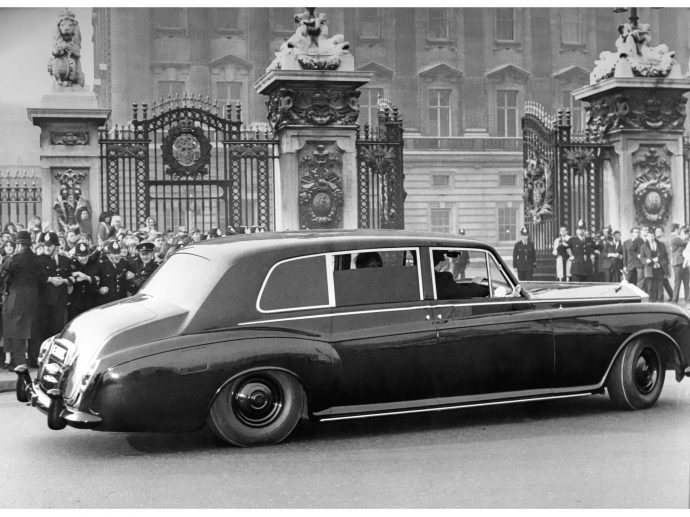Categories more
- Adventures (17)
- Arts / Collectables (15)
- Automotive (37)
- Aviation (11)
- Bath, Body, & Health (77)
- Children (6)
- Cigars / Spirits (32)
- Cuisine (16)
- Design/Architecture (22)
- Electronics (13)
- Entertainment (4)
- Event Planning (5)
- Fashion (46)
- Finance (9)
- Gifts / Misc (6)
- Home Decor (45)
- Jewelry (41)
- Pets (3)
- Philanthropy (1)
- Real Estate (16)
- Services (23)
- Sports / Golf (14)
- Vacation / Travel (60)
- Watches / Pens (15)
- Wines / Vines (24)
- Yachting / Boating (17)
Published
11/07/2021 by Rolls-Royce Motor Cars- Rolls-Royce reflects on commissions from highly prominent clients
- Three rebellious motor cars spanning four decades of marque's 117-year history
- Disruptive clients have embraced Rolls-Royce's near-limitless Bespoke possibilities
- Finished entirely in black, each car presents distinct application of powerful colour
"From its very earliest days, Rolls-Royce has attracted free spirits, creative minds and those who seek to challenge established conventions. Though from entirely different backgrounds, our founders both refused to be bound by the norms and expectations of early 20th Century society. It was their courage, vision and willingness to push boundaries that made them who they were – and our company what it is today.
"These wonderful historic cars are perfect examples of how that rebellious spirit infuses our brand story, and continues in the modern era with our Black Badge products."
Torsten Müller-Ötvös, Chief Executive Officer, Rolls-Royce Motor Cars
Over the decades, there have been many notable examples of bespoke Rolls-Royce motor cars finished in black. Each of the following examples, spanning more than 30 years, has a unique place in the marque's history.
1933 – Phantom II Continental (94MY)
In 1930, at the personal request of Henry Royce, designer Ivan Evernden penned an experimental Phantom II Continental, designated 26EX, designed specifically for long-distance Continental touring.
Having won the Grand Prix d'Honneur, Rolls–Royce decided to launch a 'series' model with the same mechanical attributes and overall coachwork dimensions as 26EX.
The first such car, 94MY, built in 1933 for Mr Samuel Coxhill, was ordered in black with "special brown leather, piped in light brown, carpets and headlining to tone, and woodwork to be highly polished veneers". If any 1930s Rolls-Royce could lay claim to embodying the spirit of today's Black Badge, it is this one.
1960 – Phantom V (5AT30)
The Phantom V was launched in 1959 to replace the venerable Silver Wraith. Most were finished in black, and used either on formal occasions, or for private use by members of the wealthy establishment.
One exception was 5AT30. Delivered in September 1960, its proud owner was HRH The Duke of Gloucester, third son of King George V and Queen Mary.
His Royal Highness clearly had strong ideas about what he wanted in his Phantom V. His most obvious departure from the accepted norm is the paint combination of matte black to the horizontal surfaces and gloss black on the vertical planes.
1965 – Phantom V (5VD73)
In December 1964, as a gift to himself, John Lennon ordered a brand-new Rolls-Royce Phantom V. The specification was, as one might expect, highly individual: he wanted the car not just to be black, but black everywhere, inside and out, including all the brightwork. Only the iconic Pantheon grille and Spirit of Ecstasy mascot retained their conventional chrome finish, at the marque's insistence.
It is wholly unique, indelibly identified with its owner and, in certain quarters, generated its share of controversy – perhaps the perfect encapsulation of the Black Badge spirit.















